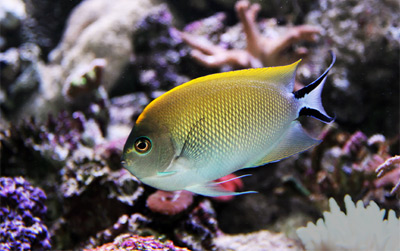Over the many years I’ve kept marine aquariums, guests in my home have more than occasionally noted the relatively low number of specimens, particularly fish, in my tanks. You could say it’s been a hallmark of my fishkeeping career to understock my aquariums, sometimes to the point that they look rather sparse. But there’s a method to the madness of my modest stocking levels.
Here are five benefits that I derive from stocking sparingly—and you can too:
1) Fewer compatibility issues
While I’ve seen my share of piscine pugilism, most of my aquariums have been fairly tranquil. This is due in part to careful specimen selection and introducing species in the proper order (least aggressive to most aggressive), but I’m convinced that giving the fish plenty of elbow (fin?) room so they can stay out of each other’s business has played a big role in promoting the peace as well.
2) Decreased demand on filtration
In a lightly stocked aquarium, the biofilter (if well established), protein skimmer, and any chemical filtrants used can easily keep pace with the nitrogenous wastes and dissolved organic compounds, providing a good margin of error against ammonia spikes and other water-quality issues.
3) Reduced maintenance
Having a lower level of dissolved pollutants translates into slower algal growth, slower accumulation of nitrate, etc. As a result, it generally takes less “elbow grease” to keep a lightly stocked aquarium in good health and looking its best. I’m not saying you can start to skip water changes, but if you get really busy for a period, waiting just a bit longer in between changes usually won’t have major negative ramifications in an understocked tank.
4) Room to grow
Most of the fish specimens sold at your local fish store are juveniles, which means that, over time, they’re going to get bigger—in some cases much bigger. A tank housing a relatively small number of juvenile fish may seem empty at first but then look just about right when the specimens gain a little size. Of course, this same point applies to corals and other inverts—little colonies grow into bigger ones, taking up more space physically and visually.
5) Room to add one more
You never know when that dream fish or hard-to-find coral that you assumed you’d never see in real life will suddenly become available. If/when that happens, you’re going to wish you had the space in your tank to accommodate it (assuming it’s otherwise compatible with all your current livestock). Why not build in that possibility right from the start?



